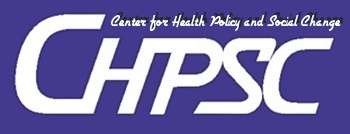share this post
Anemia among pregnant women and children under fives is still an important health problem in Gunungkidul Regency as it is closely related to morbidity, mortality and quality of life for women and children in the current and next generation. This research aims to understand the prevalence of anemia in pregnant women and children under five and reveal the several socio-demographic, cultural and behavioral factors that contribute anemia prevalence.
Based on the survey, the prevalence of anemia in pregnant women has been already decreased (41.3%). Anemia is most common in the second trimester of pregnant period. Based on the results of a 24-hour period, most pregnant women still do not have appropriate intake of calories, protein, and iron. Insufficient protein intake may reduce the ability of the body to absorb iron, which also consumed insufficiently from food.
Most pregnant women (90.2%) have received iron supplements. Non-generic iron supplements play a large role in supplementing iron in pregnant women and need to be considered during governmental program planning. Despite this, in terms of program coverage, data shows that the total number of iron supplements (generic and non-generic) received by pregnant women still does not reach the quantity of 90 tablets, and 36.1% of pregnant women in trimester III did not yet receive > 60 iron supplements.
The degree to which women adhere to the taking of iron tablets is high and the adherence to taking non-generic iron supplements is higher still. Psychological factors due to “paying” for the supplement as well as belief in the product influence the motivation to take the non-generic iron supplement. The price of one packet of iron tablets bought by women’s pocket is about Rp 2,500.00.
From test statistics, the current intake of iron supplements do not influence the degree of hemoglobin (Hb) in pregnant women and the prevalence of anemia. Yet this is due to a number of implementation weaknesses, so the effectiveness of supplementation is more difficult to measure, because :
1. The amount of iron supplement consumed by pregnant women varies widely, being drinked in the early of pregnancy age which is also varies widely.
2. Recall of the amount of Fe supplement being consumed had a bias potency caused by the limited of the pregnant women’s memories, although this had been minimalized by asking the amount of iron supplement left over.
3. The pregnant women take both generic and non-generic iron supplement.
4. Non-generic supplement and it’s composition varies very widely from pure vitamin (without Fe) to which contained Fe with varied dose.
Analysis of the factors that influence the prevalence of anemia in pregnant women note that the higher the Ante Natal Care visit score of the woman, the less likely the risk of anemia by 0.435 times; the higher the woman scores on knowledge of iron tablets, the less likely the risk of anemia by 0.75 times; and the higher the percentage of sufficient iron intake compared to Recommended Dietary Allowance (RDA) according to age, the less likely the risk of anemia by 0.981 times.
The prevalence of anemia in children under fives is 28.2%, which consist of 57% mild anemia and 43% moderate anemia. Anemia more often affects children under fives between the ages of 12–23 months with a father’s educational background that is relatively low and those who reside in coastal locations.
As many as 61.4% children under fives have been given iron supplemental syrup from the program. Low levels of adherence (31%) by mothers in giving their children the syrup are due to the following factors: low levels of knowledge of the mothers or caregivers about anemia and the iron supplemental syrup’s uses and benefits, as well as refusal by children under fives of the syrup due to its smell and taste and factors of mother forgetfulness in giving the syrup.
The effectiveness of the iron supplemental syrup distributed to the under fives is very good, and this effectiveness can be seen in the higher incidence of anemia cases in children under fives who have not received the syrup. There are also significant differences in the average degree of hemoglobin between children under fives that take the syrup compared to those that do not. In terms of the willing to pay, more than half of all mothers/caregivers of children under five (59%) are willing to buy the iron supplemental syrup, with price for 1 bottle of iron syrup is Rp 1,000.00.
Analysis of factors that contribute to the prevalence of anemia in children under fives notes that children under fives that reside in hilly areas have a risk 0.1 times higher of suffering from anemia compared to those living in flat areas, while children under fives that reside in coastal areas have a risk 13 times higher of suffering from anemia. Children under fives whose fathers have a low education level are at 0.01 times more risk of suffering from anemia compared to those whose fathers have a basic education. Giving exclusive breast-feeding has a negative impact in which the longer breast-feeding is given exclusively, the higher the risk of the children under fives suffering from anemia.
The suggested recommendations to decrease the prevalence of anemia in pregnant women, include: (1) Educate midwifes, that the iron supplementation should be begin as soon as possible during pregnancy; (2) Subsidies for generic iron tablets should give greater allotment to women (who are less well off) who come to Ante Natal Care (ANC) through community health centers and should not be limited to only 90 tablets; (3) Iron supplementation should be provided in conjunction with effective Information Education and Communication (IEC) efforts; (4) Mother’s attitude to Ante Natal Care can be improved by more informative and friendlier care; (5) Iron supplementation needs to be given with additional 25-50 mg of Vitamin C; (6) Anemia screening of all pregnant women needs to be conducted in a consistent manner with sufficient follow-up; (7) The Health Department should develop guidelines for private midwives regarding the minimum number of non-generic iron supplements that need to be provided for women during pregnancy; and (8) The package, taste and form of iron supplementation should be improved, if the pills would be distributed through private channel.
There are a number of suggested recommendations to decrease the prevalence of anemia in children under fives, these include: (1) The efficiency of iron supplementation program can be increased by sharpening the program beneficial targets; (2) More attention should be given to children under fives that reside in coastal areas; (3) Innovations should be made in the iron supplemental syrup so that it has a smell and taste more palatable for children, along with more interesting package; (4) Providing iron supplemental syrup as a treatment for anemia must be done in conjunction with conveying sufficient information about directions, suggested doses, and its use and advantages as well as its side effects; (5) Information should be disseminated about the impact of giving exclusive breast-feeding over a very long periods of time to the nutritional status of the children; and (6) The radio should be used to support health promotion as it is the most efficient and effective media for this.






















Comments :
Post a Comment